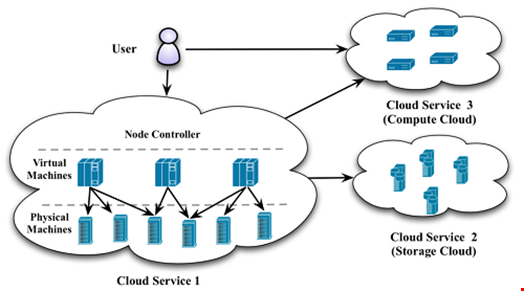Distributed clouds are popular in enterprises due to the large volume of IT assets and applications in enterprise environments.
However, complex networks like distributed clouds increase the surface area for security threats, which is not ideal for enterprise-scale organizations. What can enterprises do to mitigate these threats and make distributed clouds safer?
The Role of the Distributed Cloud in Today’s Enterprise Environments
The cloud has evolved over time to meet increasing computing power and storage demands. This has led to the rise of the distributed cloud, a cloud computing model that serves data from geographically distributed sites to boost performance.

The distributed cloud brings tons of impressive benefits to companies. It’s greatest advantage, though, is in enabling multi-cloud deployments, which is being used by 74% of enterprises today. Multi-cloud and distributed environments are popular because they generate immense cost savings thanks to greater scalability and an improved ability to meet resource-intensive business needs.
The Threats Facing Distributed Cloud Environments
Managing security in distributed clouds is difficult even for experienced organizations. Take the existing security challenges in traditional cloud environments like cloud security, network access control, or firewall management and multiply them by tenfold—that’s what enterprises are expected to handle in distributed clouds. There are more authorization controls, more integration challenges, and certainly a lot more dependencies to consider.
Keeping data safe in distributed environments is more than just implementing established security controls. It requires the right teams, a company-wide safety-first culture, and ensuring that security solutions in place can work across the entire distributed cloud network.
If companies want their distributed clouds to succeed, they must have best-in-class security policies in place to safeguard their customers and operations. Here’s how they can do it.
How to Secure Distributed Clouds in Enterprises
1. Improve Visibility - A standard multi-cloud environment consists of various applications and modules with different characteristics. While everything seems fine at first glance, technical problems arise when the network needs to be modified or upgraded.
The solution is to map out every asset and dependency that make up distributed cloud environments. This improves visibility, which lends itself to tightened security and better cloud management in general.
Enterprises should employ technology to help them map their cloud architectures. Doing it by hand takes too much time and effort compared to industry-standard tools that achieve the same goal with minimal costs and zero errors.
2. Scale Accordingly - Rapidly increasing workloads call for improved IT infrastructure scaling in businesses. Cloud resources are designed to be scalable by changing several lines of code and increasing spending. This ease of scaling, however, can lull organizations into scaling too much without considering the side effects.
Scaling cloud resources would require an equal expansion in security systems. If an enterprise’s security measures cannot keep up with the rate at which its cloud environment is growing, it’s only going to increase the attack surface for costly breaches.
To avoid this problem, enterprises should consider the scalability of their security systems first before expanding cloud environments. Security applications should also be integrated into the environment, not as a separate or external resource, to maintain business continuity.
3. Less Manual Work, More Automation - Automation is a must for good distributed cloud management. Again, an increased number of applications and dependencies make it almost impossible for it to be done efficiently by hand. The time saved from automation can then be funneled towards higher-level, strategic work.
Automating cloud security also makes sense since there are many processes (e.g. anomaly detection) that can be automated to great effect. For example, an enterprise can set alerts to automatically quarantine and disconnect compromised cloud containers without employees having to keep their eyes peeled all the time.
Aside from security, automation and AI allow enterprises to speed up their processes, which contributes to faster time to market. In today’s competitive landscape, pushing out products quickly is necessary to keep up with consumer demand and proactive rivals.
4. Revise Cloud Governance Policies - Enterprises should revise their governance policies in preparation for the impending cloud-first economy. Complying with data privacy legislations is now the bare minimum for enterprises.
It’s recommended to build governance-specific teams with employees who have experience in dealing with data and customer laws. Also, stay updated on the latest changes in the data privacy space. Regulations can change at any moment and regulators won’t hesitate to impose hefty fines on enterprises that are slow to react.
Secure Your Cloud Environment Today
As security threats become more intelligent and evasive over time, organizations should not let their guards down when dealing with security. To ensure watertight security in distributed cloud environments, enterprises should revise their entire security posture, from improving asset visibility to automating repetitive work, to revising their governance policies—and there’s no better time to start doing all these than today.
